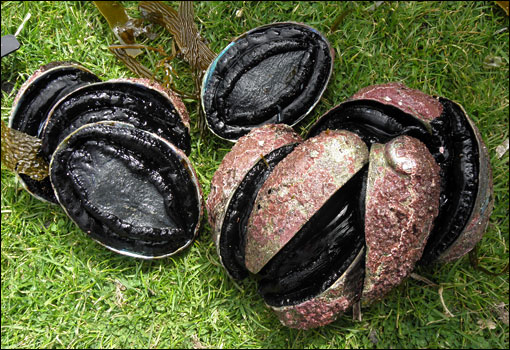Left Chathams at 10:15am on Wednesday 17th and arrived to Wellington two hours later. Checked in at XBase. Had a shower, write up sightings, checked e-mail, updated the travel blog and had a late taste-of-india- lunch round the corner. Took the bus uphill to Karori Sanctuary, but unfortunately it closed at 4pm and I were 20 minutes late. However, I took a walk along the fence and saw lot of Tuis, several singing Tomtits, Fantails, a New Zealand Falcon at three occasions and saw and heard several Long-tailed Cuckoos. Then I had a nice walk down to my accommodation through Aro valley. Got to bed early.
 |
| Central Wellington seen from Karori. |
 |
| One of many Tuis seen on my walk in Aro valley. |
Got up at 06:15am. Packed and had breakfast at XBase while checking e-mail. Took a taxi to the ferry terminal and checked-in my baggage. The ferry to Picton on the South Island left at 8:25am. It were very windy in the open sea. The ferry was steady, but the salt spray were quite annoying for an hour or so. However, the crossing produced a few Flesh-footed Shearwaters, at least 300 Fairy Prions and a magnificent White-capped Albatross! When we approached Marlborough Sounds the sea got calmer and I started to look for shags and the King among shags. I saw Little, Little Black, Pied and Spotted Shags, but, unfortunately, not a single King Shag. There were a few good rafts of Fluttering Shearwaters and a many Australian Gannets.
Well in Picton I headed to the train station, not more than five minutes from the ferry terminal. Here I should meet the Swiss birder Dominic Martin by appointment for company to Kaikoura and seawatching there. He arrived ten minutes before the departure. The Tranz Scenic took about 2 1/2 hour and offered nice views along the coast. In Kaikoura we visited the Albatross Encounter's office and payed for tomorrow's pelagic trip and then headed to our accommodation at Lazy Shag. Dominic made a nice pasta supper and afterwards we had a five minutes walk to the beach for an hour of seawatching. We saw six Parasitic Skuas (and a few unidentified distant ones), numerous of small shearwaters (most probably Hutton's), Red-billed Gulls, White-fronted Terns, Australian Shovelers and a pair of Banded Dotterel. We rounded off the day at a nice outside table, a latte for me and a beer for Dominic and a nice chat.
 |
| Wellington seen from the ferry to Picton. |
 |
| Tory Channel (Marlborough Sond) on the South Island. |
 |
| View from the ferry at Queen Charlotte Sound. |
 |
| Dominic scanning the sea at the beach of Kaikoura. |










































































